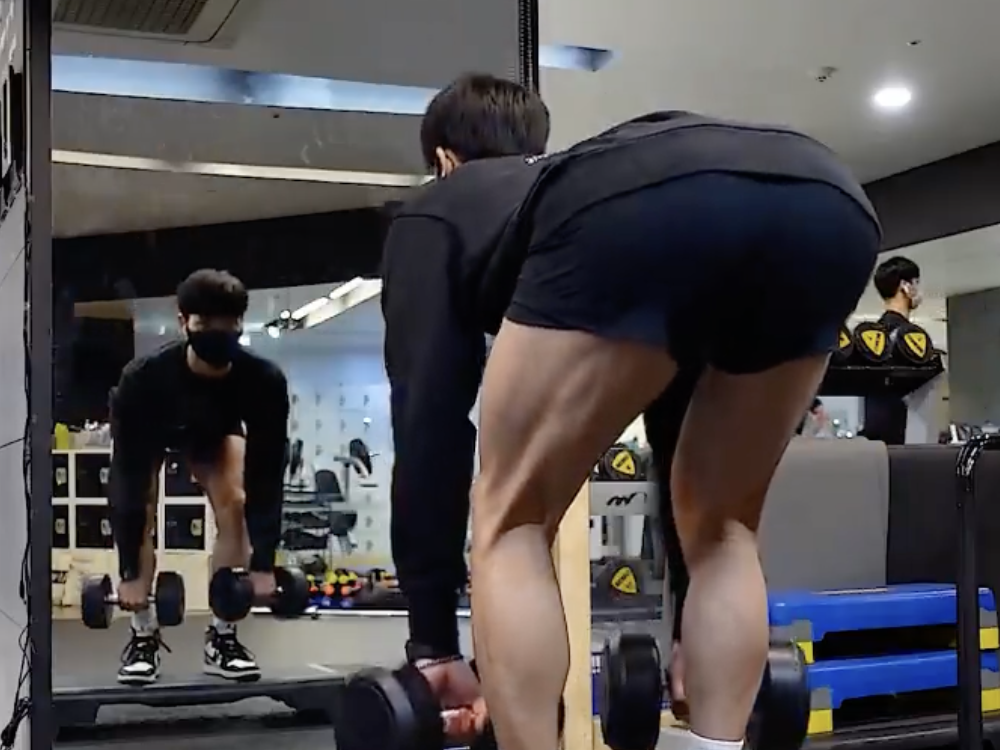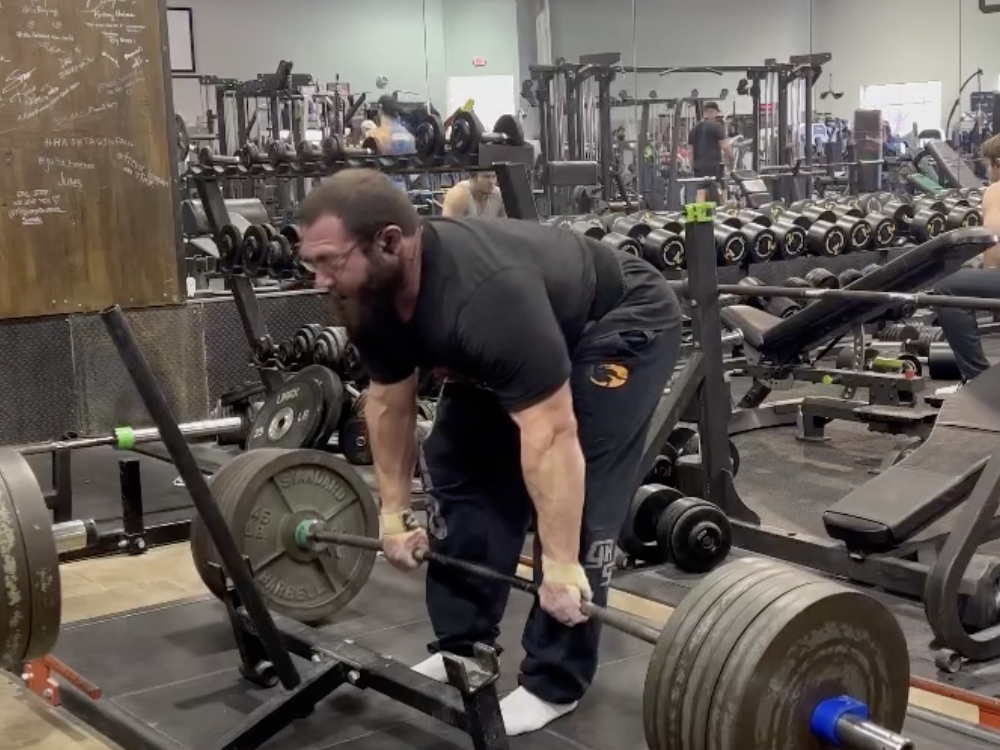Stiff Leg Deadlift Guide
Written by The Boostcamp Editors
Build strength and flexibility in the posterior chain
Stiff leg deadlifts (SLDLs) are an excellent exercise for developing hamstring strength, glute activation, and lower back stability. Often overlooked, this movement can actually improve your entire posterior chain while also increasing flexibility and mobility. However, if you perform the movement incorrectly, it can lead to injury, or you may not get the most out of the exercise, leading to lack of gains.
That being said, our team at Boostcamp has put together a detailed guide that covers everything you need to know about performing stiff leg deadlifts effectively and safely.
What Are Stiff Leg Deadlifts?

Image courtesy of pb_juni
Stiff leg deadlifts are a variation of the conventional deadlift that places more emphasis on the hamstrings and lower back by reducing the bend in your knees. Unlike conventional deadlifts, which focus on total body strength, SLDLs target the posterior chain, making them a staple in leg and back workouts.
Muscles Worked
Stiff leg deadlifts primarily engage the following muscles:
Hamstrings: Primary movers, responsible for the hinge motion.
Glutes: Act as stabilizers and help with hip extension.
Erector Spinae: Supports the lower back during the lift.
Core: Stabilizes your torso and prevents excessive rounding of the back.
Benefits of Stiff Leg Deadlifts
Strengthens the Posterior Chain: Builds hamstring and glute strength, which translates to improved performance in running, jumping, and squatting.
Enhances Flexibility: Improves hamstring flexibility through the controlled stretch at the bottom of the movement.
Supports Injury Prevention: Strengthens the lower back and improves hip mobility, reducing the risk of injury in other lifts or activities.
Develops Grip Strength: Holding the barbell helps improve grip strength, which benefits other compound lifts.
How to Properly Perform Stiff Leg Deadlifts
1. Setup
Equipment: A barbell or dumbbells.
Stance: Stand with your feet hip-width apart.
Grip: Use an overhand grip on the barbell, or hold dumbbells at your sides.
2. Execution
Starting Position:
Stand tall, holding the barbell or dumbbells with arms fully extended.
Engage your core and retract your shoulder blades slightly.
Hinge at the Hips:
Keeping your knees slightly bent (soft), push your hips back.
Lower the weight slowly while keeping your back straight.
Maintain a neutral spine and avoid rounding your back.
Stretch the Hamstrings:
Lower the weight until you feel a stretch in your hamstrings or the barbell reaches mid-shin level.
Avoid lowering too far if it compromises your form.
Return to Starting Position:
Press through your heels and drive your hips forward.
Stand back up, keeping the weight close to your body.
Tips for Proper Form
Focus on the Hinge: The movement should come from your hips, not your lower back.
Control the Descent: Avoid dropping the weight too quickly; emphasize the eccentric phase for maximum benefit.
Keep the Bar Close: Keep the barbell or dumbbells as close to your body as possible.
Neutral Spine: Maintain a straight back throughout the movement.
Common Mistakes to Avoid
Overextending the Knees: Keep a slight bend in your knees to avoid unnecessary strain.
Rounding the Back: A rounded back increases the risk of injury. Always keep your spine neutral.
Lifting Too Heavy: Prioritize form over weight to maximize effectiveness and minimize injury risk.
Locking Out Aggressively: At the top of the lift, avoid hyperextending your hips or lower back.
Variations of Stiff Leg Deadlifts
Dumbbell Stiff Leg Deadlifts: Use dumbbells for more range of motion and versatility.
Single-Leg Stiff Leg Deadlifts: Focus on one leg at a time to improve balance and unilateral strength.
Deficit Stiff Leg Deadlifts: Stand on a platform to increase the range of motion for a deeper stretch.
Romanian Deadlifts: Similar to SLDLs but with a more pronounced knee bend and less emphasis on the hamstrings.
Incorporating SLDLs Into Your Workout

Reps and Sets:
For strength: 3–5 sets of 4–6 reps at a heavier weight.
For hypertrophy: 3–4 sets of 8–12 reps with moderate weight.
For flexibility and endurance: 2–3 sets of 12–15 reps with lighter weight.
Placement in a Routine:
Use SLDLs as an accessory lift after squats or deadlifts.
Include them in leg days or posterior chain-focused workouts.
Safety Precautions
Warm Up: Ensure your hamstrings and lower back are warmed up before performing SLDLs.
Use a Lifting Belt: Consider wearing a weightlifting belt if lifting heavy to support your lower back.
Start Light: Master the form with lighter weights before progressing to heavier loads.
Listen to Your Body: If you feel pain or discomfort in your lower back, reassess your form or reduce the weight.
Where to Find Workout Programs
When it comes to incorporating stiff leg deadlifts into a workout program, the Boostcamp App can be your last stop. Being home to over 50 free workout programs that are all designed by renowned coaches, you cannot go wrong no matter what your goals are.
On the other hand, if you want to create your programs that cater specifically to your goals, schedule, and whatever else, then Boostcamp is also a great platform to use. With the Program Creator feature, you can do all of that.
No matter what avenue you choose, you can track your workouts right in Boostcamp.
Conclusion
Stiff leg deadlifts are a powerful exercise for improving hamstring strength, flexibility, and overall posterior chain development. When performed with proper form and incorporated strategically into your workout routine, they can yield significant benefits. Prioritize technique, progress gradually, and enjoy the results as you build a stronger, more resilient body.
Be sure to follow Boostcamp onInstagram and follow onYoutube!


